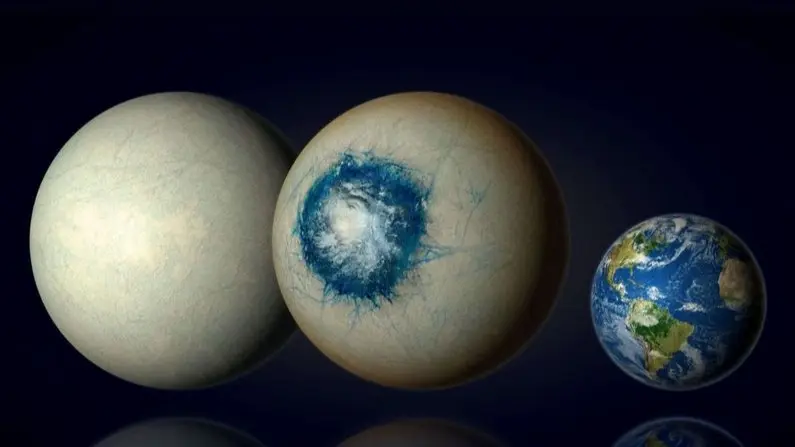Updated 10 July 2024 at 13:51 IST
Groundbreaking Discovery: LHS 1140 b Emerges as Potential Super-Earth Ice or Water World
Researchers discover LHS 1140 b, a potentially habitable exoplanet with water-rich features, offering new insights into future habitability studies.
- Science News
- 3 min read

Space exploration is one of those things that has made everyone curious, and people are interested in knowing what lies outside of this blue planet. And for that, NASA and the other space organisations are putting in a lot of effort to know if there is a home outside in the deep blue sky.
And now a team built with many international researchers has made a groundbreaking discovery in the search to find a potentially habitable exoplanet. Their study, which was accepted for publication in The Astrophysical Journal Letter, revealed that LHS 1140 b, which is an exoplanet located approximately 48 light-years away in the constellation Cetus, could be a super-Earth ice or water world.
The findings, which were led by the Université de Montréal, challenged previous knowledge about the exoplanet LHS 1140 b. Initially, it was said that this exoplanet was thought to be a mini-neptune with a thick hydrogen-rich atmosphere. But the new data from the James Webb Space Telescope (JWST) states that it is more likely a rocky or water-rich planet and is larger in size than our home planet.
The lead author and doctoral student at Université de Montréal, Charles Cadieux, stated the significance of this discovery and said, “LHS 1140 b could well be our best bet to one day indirectly confirm liquid water on the surface of an alien world beyond our solar system.”
Advertisement
This planet orbits a red dwarf star in its habitable zone, where there are chances that the temperatures could potentially support the existence of water in liquid form on the surface. Analysing the data given by JWST and matching it with the previous observations from the other telescopes shows that this new LHS 1140 b exoplanet may have a nitrogen-rich atmosphere similar to our Earth.
NASA Sagan Fellow at the University of Michigan, Ryan MacDonald, who had an important role in analysing the date about the planet’s atmosphere, said, “This is the first time we have ever seen a hint of an atmosphere on a habitable zone rocky or ice-rich exoplanet.”
Advertisement
This research also suggests that 10 to 20 percent of the whole mass of the LHS 1140 b could be water, and the current model indicates that it might be a snowball planet and has a bull’s-eye ocean with a diameter of 4,000 kilometres and potentially a comfortable surface temperature of 20 degrees celsius at its centre.
As these findings look promising, the researchers are aware that additional observations of the JWST are necessary to confirm the presence of an atmosphere rich with nitrogen and search for other important gases as well.
Nonetheless, LHS 1140 b emerges as an exceptional candidate for future habitability studies, offering a unique opportunity to explore a world that could potentially support life.
But after all these, the exoplanet LHS 1140b looks like a promising candidate for future habitability studies, offering the opportunity to explore a world filled with the potential to support human life.
Published By : Garvit Parashar
Published On: 10 July 2024 at 13:51 IST
